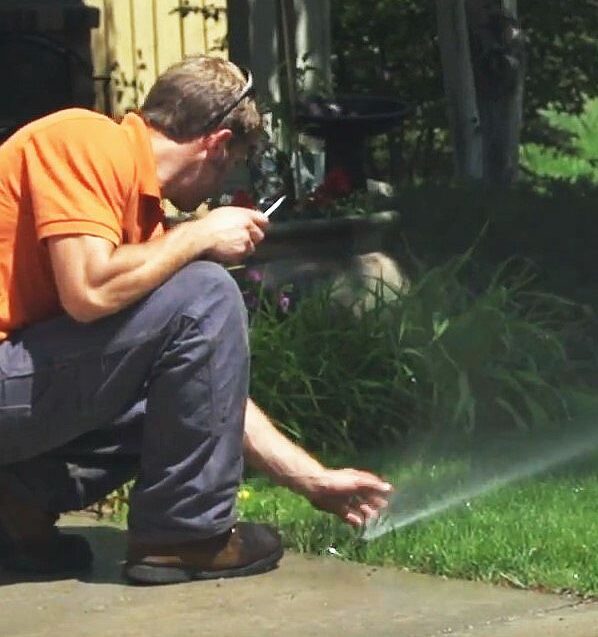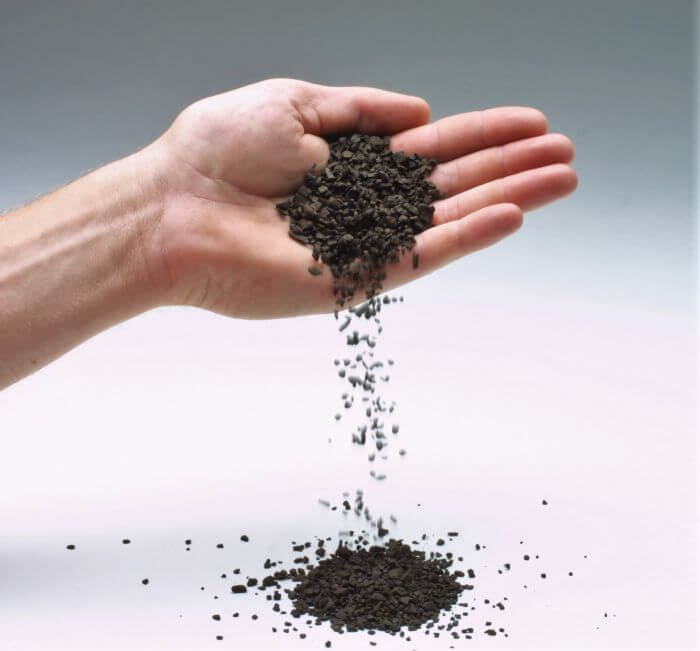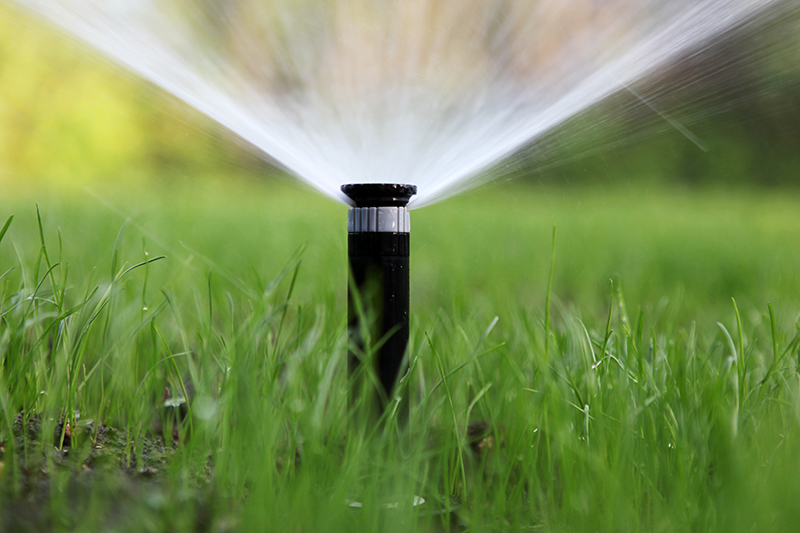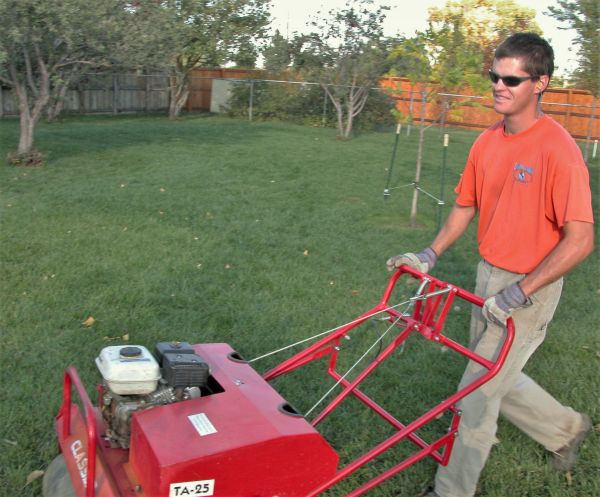ASCOCHYTA LEAF BLIGHT
The Summer Lawn Disease
Caused by a Rapid Shift From Cool & Wet Weather to Hot & Dry Weather
Ascochyta Leaf Blight is most commonly observed when there is a rapid shift from cool, wet weather to hot, dry conditions. This common summer lawn disease typically arises sometime in late May or early June when temperatures rise quickly from 60’s and 70’s to 80’s plus.
Ascochyta is a Symptom of Shallow Digging Grass Roots
Problems with Ascochyta Leaf Blight are more likely to occur in lawns with shallow digging grass roots. Short roots can result from poor watering practices, mowing the lawn too short, and inadequate cultural care. Typically, although not exclusively, Ascochyta is found in areas with poor sprinkler coverage or where little to no water is applied to the lawn. Lawns with deep-rooted grass are less susceptible to this minor lawn fungus.
Ascochyta Leaf Blight
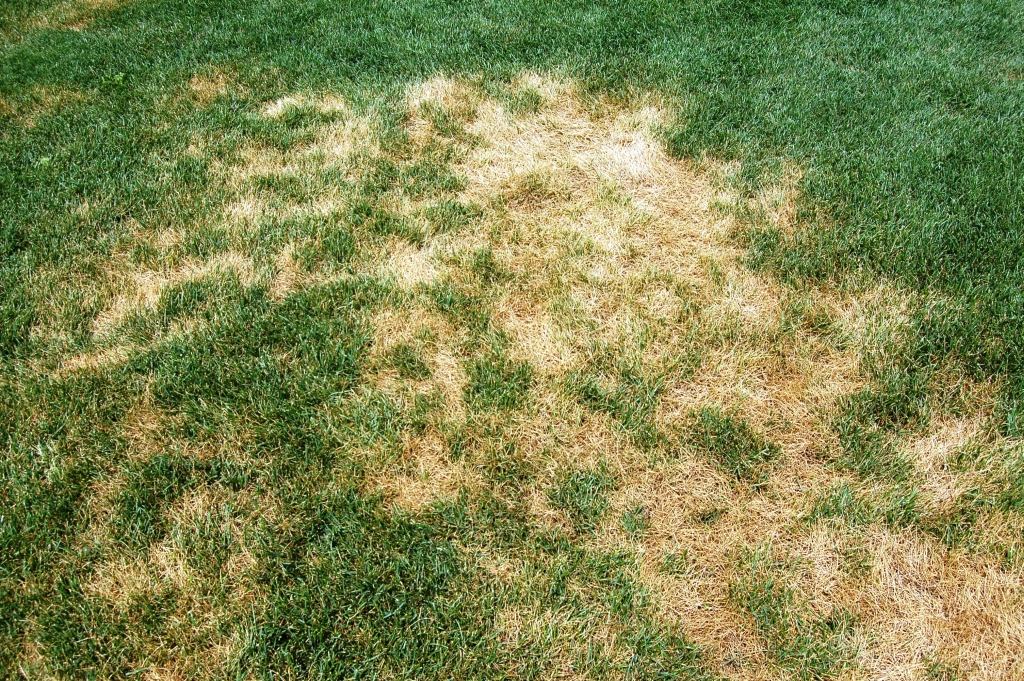
Management and Prevention
Fix the Watering Practices
To effectively prevent and manage Ascochyta leaf blight in your lawn, it is essential to adopt cultural practices that encourage your grass to develop deep, robust roots. Implementing deep and infrequent irrigation can significantly enhance root growth, allowing your grass to better withstand environmental stresses and thrive.
Mowing Height Matters
Equally important are proper mowing techniques. Avoid cutting the grass too short, as scalping can weaken the turf and hinder root development. By keeping your mower blades sharp, you ensure clean cuts that heal quickly, thereby reducing opportunities for fungal infections to take hold. Additionally, routinely cleaning and disinfecting your mowing equipment is crucial for preventing the spread of spores across your lawn.
Fungicide Treatments are Not Necessary
While antifungal treatments are seldom needed for Ascochyta leaf blight, soil surfactant applications with yucca extract can be a valuable option in severe cases or in high-maintenance turf areas. More often than not, an infected lawn will recover naturally with adjustments to watering practices or favorable weather conditions. By incorporating sound lawn care techniques, such as aerating compacted soil and ensuring proper drainage, you can foster a healthier lawn that naturally resists fungal diseases like Ascochyta leaf blight. Follow these guidelines and enjoy a lush, resilient lawn!
Lawn Mower Stripes
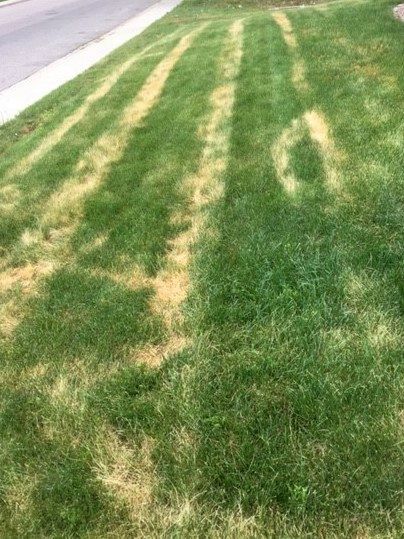
Examples of Ascochyta Lawn Fungus
Damage Starts in the Center of the Blade of Grass
Irregular Bright Yellow Patches are a Clear Sign of Ascochyta
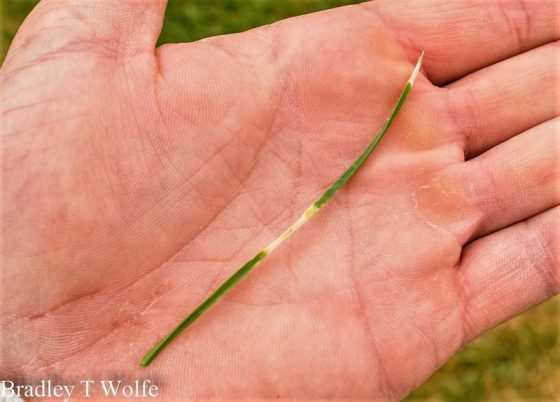
The Ascochyta lawn fungus can be recognized by the initial damage it causes to the center of the grass blades. In this picture, both the top and bottom of the grass blade remain green.

This lawn in Boulder, Colorado, is currently facing the challenges of Ascochyta Leaf Blight, a harmful fungus that thrives in lawns with shallow root systems. Addressing this issue responsibly will restore the health and beauty of your lawn while preventing further damage.
How to Prevent Ascochyta in Lawns
How to Identify Ascochyta Leaf Blight in a Lawn?
Blade Inspection Technique
To properly identify Ascochyta leaf blight fungus, examine the newly infected leaf blades by getting on your hands and knees near the edge of the damaged area. Look for a blade of grass that is neither completely damaged nor entirely healthy. You will notice that this blade is collapsed, folded in half lengthwise, with a brown area starting in the center, while the top and bottom remain green. This results in a blade that has a green top, a brown center, and green bottom.
The Difference Between Ascochyta and Dollar Spot
The key difference between Ascochyta leaf blight and Dollar Spot fungus is that Ascochyta does not have a dark band above the brown middle section, whereas Dollar Spot fungus does have this dark band. Aside from that distinction, there are no significant differences between these two common lawn diseases found in Colorado.
Shallow Digging Roots
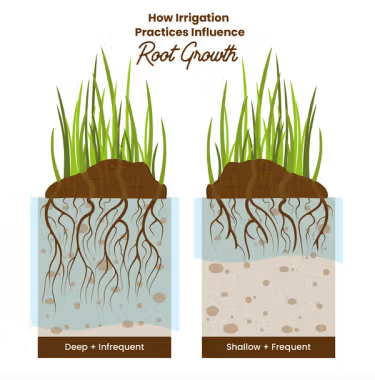
Minor Damage to the Lawn
Generally, Ascochyta leaf blight causes only minor damage to lawns because it does not affect the crown of the grass blades. To address the lawn issue and prevent future fungus outbreaks, adjustments to the lawn’s watering schedule are necessary. It’s important to remember that Ascochyta is a symptom of a larger problem, often rooted in very short grass roots. Short roots typically result from shallow, frequent watering, which prevents roots from reaching deeper soil for water. Additionally, excessive watering can displace air in the soil, causing roots to remain shallow as they search for oxygen.
Mowing
Although Ascochyta leaf blight and Dollar Spot fungus are often found in drought-stricken areas, the fungus can enter grass through damaged or cut leaf tips. It frequently utilizes water as a means of transmitting infection to new blades of grass, which is why we recommend waiting 24 hours after mowing before watering the lawn.
Should Not Experience Long Term Damage
Ascochyta/Dollar Spot can be compared to a cold in humans: while anyone can catch a cold, healthier individuals are less likely to contract one. The same applies to turf grass. Lawns with deep roots, proper organic fertilization, aeration, deep and infrequent watering, correct mowing techniques, and strong, healthy soil conditions are far less likely to suffer from minor lawn diseases or fungi.
Minor Ascochyta Leaf Blight
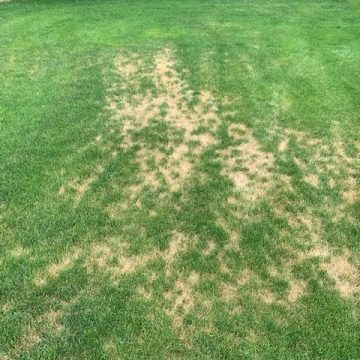
How to Treat a Lawn with Ascochyta Leaf Blight
Note: There are 2 different treatment plans!
Plan #1 – If the Lawn was Watered Shallow or Daily – Which Caused the Roots to Stay Shallow.
Plan #2 – Overwatering the Lawn – Which Caused the Roots to Stay Shallow
Recovery Plan for Shallow or Frequent Lawn Watering
Expected Recovery in 7-14 Days
When the lawn watering is too shallow the lawn’s roots never dig deep because there isn’t any moisture deep in the soil.
Fix The Watering
Adjust the watering schedule of the lawn to properly water the lawn deeply and infrequently. Ascochyta leaf blight / Dollar Spot fungus is a symptom of shallow grass roots. If the lawn was suffering from shallow and frequent lawn watering, the first step is to fix the broken sprinkler head and / or make adjustments to the watering schedule.
Water for 3 Consecutive Days
To bring the lawn out of the stressed environment we recommend watering the lawn deeply for 3 consecutive days. After the three deep soakings, go back to a proper lawn watering schedule. Also, it is important to water early in the morning instead of late at night or even worse in the daytime.
Core Aeration
Perform two lawn aerations. One in the spring and one in the fall, to alleviate soil compaction.
Soil Conditioner
Apply Humate Soil Conditioner at any time of the year or at any time that the disease is active. Humate will increase the beneficial bacteria populations in the soil.
Avoid Fungicides
Never apply synthetic pesticides (weed controls and lawn fungicides) to the infected area. Pesticides can hinder beneficial microbial activity in the soil, and microbial activity is essential to proper treatment of Ascochyta/Dollar Spot.
Mowing
Never mow the grass if it is wet, and always wait 24 hours after a mowing to water the grass. After a mowing the grass blades have been damaged. It takes 24 hours for a grass to repair the abrasion. If water is added to the lawn before the lesion has time to heal, the fungus can use the water as a transportation mechanism and infect new and otherwise healthy blades of grass.
Pro Tip
Until the lawn fungus is eliminated, bag the grass in the infected area, increase the mowing height to 3” or 3.5”, and increase the mowing frequency so no more than 1/3 of the blade of grass is removed per mow.
Fix the Improper Lawn Watering Programming
Humate Soil Conditioner
Recovery Plan for Severe Overwatering
Expected Recovery in 14-28 Days
If the lawn has short grass roots because it has been over watered, the grass roots are short because the water has replaced all the air in the soil. Since there is no air in the soil the roots will stay shallow because they are starved for oxygen.
Fix the Watering
Adjust the watering schedule of the lawn to properly water the lawn deeply and infrequently. Ascochyta leaf blight / Dollar Spot lawn fungus is a symptom of shallow roots. If the lawn is suffering from too much water, the soil will be starved of oxygen and therefore the roots will stay at the surface looking for air. After fixing the watering it will take time and the lawn will need time to dry out so the roots to grow deeper.
Core Aeration
Perform two core aerations, one in the spring and one in the fall, to alleviate soil compaction.
Soil Conditioners
Apply Humate Soil Conditioner at any time of the year or at any time that the disease is active. Humate will increase the beneficial bacteria because it is a healthy food source full of beneficial organic matter.
Do Not Apply Fungicides
Avoid applying synthetic pesticides (chemical weed controls and lawn fungicides) to the area. Pesticides can hinder microbial activity, and microbial activity is essential to proper treatment of Ascochyta/Dollar Spot.
Mowing
Never mow the grass if it is wet and always wait 24 hours after a mowing to water the grass. After a mowing the grass blades have been damaged. It takes 24 hours for a grass to repair the abrasion. If water is added to the lawn before the lesion has time to heal, the fungus can use the water as a transportation mechanism and infect new and otherwise healthy blades of grass.
Pro Tip- Until this lawn fungus is eliminated, bag the grass in the infected area, increase the mowing height to 3” or 3.5”, and increase the mowing frequency so no more than 1/3 of the blade of grass is removed per mow.
Learn How to Properly Water a Lawn
Core Aeration
A Closer Look at Ascochyta Leaf Blight in a Lawn
Ascochyta in a Bluegrass Lawn
Ascochyta in a Fescue Lawn
Minor Ascochyta in a Bluegrass Lawn
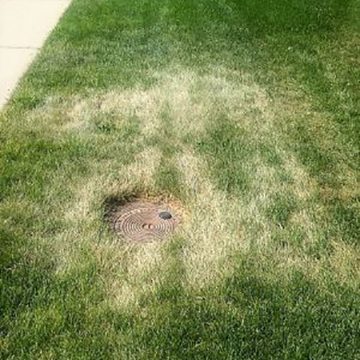
This lawn in Fort Collins Colorado is suffering from Ascochyta Leaf Blight fungus, which is a mild stress fungus that can be easily fixed with a few adjustments to the sprinkler system.
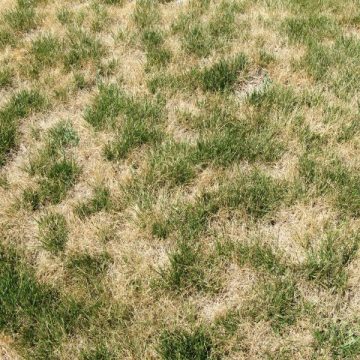
This Ascochyta leaf blight affects a tall fescue lawn in Arvada, Colorado. Ascochyta appears vastly different in a fescue lawn compared to a bluegrass lawn; it closely resembles necrotic ring spot.

Ascochyta Leaf Blight fungus in a lawn in Louisville Colorado. This is a minor outbreak and it should go away by watering the lawn for 3 consecutive days and then returning to the 1-2-3-2-1 technique.
Summer Lawn Disease Experts
We address the cause of the lawn fungus instead of only treating the symptoms.
Boulder / Longmont Area (303) 499-2000
Fort Collins / Loveland Area (970) 225-9425.
Lawn Expert
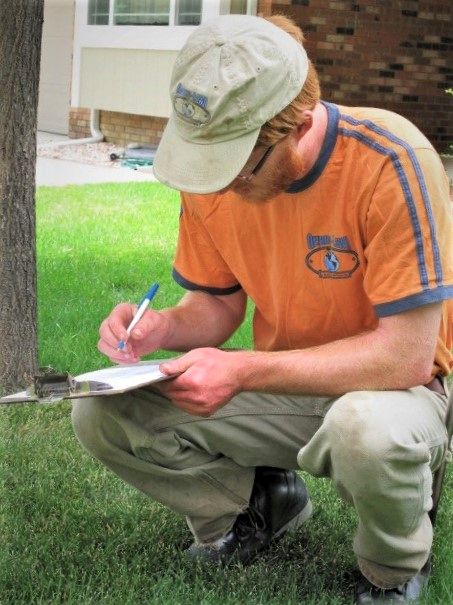
Ascochyta Leaf Spot and Dollar Spot Lawn Fungus FAQ's
How to Treat Dollar Spot Without Fungicides?
Dollar Spot should never require a fungicide to repair the damaged area of the lawn. Dollar Spot can be easily repaired by watering the damaged area deeply for three consecutive days and the returning to the 1-2-3-2-1 lawn watering technique.
Other lawn care services that might help with curing Dollar Spot leaf blight are to aerate the soil twice per year in the spring and fall. Humate soil conditioner does a great job at breaking up clay soils which allow grass roots to dig deeper.
What Causes Dollar Spot Fungus to Appear?
Most fungus problems occur from poor watering practices. Dollar Spot lawn disease is caused by improper lawn watering practices. Dollar Spot Fungus is a symptom of shallow grass roots typically caused by light frequent watering. The lawn fungus is often most noticeable in areas of poor sprinkler coverage. Dollar Spot Fungus treatment is fast and easy to remedy by correcting the sprinkler system coverage issue or improper lawn watering practices. After fixing the sprinkler system or improper lawn watering practices it is important to water the lawn for three consecutive days and then go back to the 1-2-3-2-1 lawn watering technique. The lawn will typically recover in 7-14 days.
Additional FAQs - Ascochyta Leaf Blight Fungus
While it may seem that Ascochyta leaf blight is spread by lawn mowers, this is a misunderstanding of the situation. The first signs of Ascochyta leaf blight often appear in areas where the mower wheels have passed. However, the mower is not the real culprit. Instead, the pressure of the mower wheels causes grass to turn brown, but the lawn was already under stress before it was mowed. The stripes left behind by the mower serve as a visible indication of a more significant issue: the lawn is struggling due to shallow grass roots. Addressing this root problem is essential for a healthy, vibrant lawn.
Ascochyta leaf blight is a fungal disease that affects turfgrass, causing patches of brightly colored yellow grass. It primarily affects cool-season grasses like Kentucky bluegrass, perennial ryegrass, and fescue.
The disease is triggered by environmental stress, such as rapid changes in moisture, heat, or mowing stress. It often appears shortly after periods of cool rainy weather followed by a rapid change to hot and dry weather.
The disease causes leaf blades to dry out and turn tan or straw-colored, often with distinct lesions or discoloration starting at the center of the grass blades. Roots and crowns usually remain unaffected, allowing the grass to recover.
No, Ascochyta leaf blight is not usually fatal. The disease affects only the leaves, not the roots or crown, so the grass can recover with proper care and environmental improvement.
Ascochyta leaf blight effects lawns with shallow digging grass roots. To promote deep digging grass roots it is best to follow the 1-2-3-2-1 lawn watering practices, avoiding overwatering or irregular watering cycles, mowing at the correct height (3 inches or taller), and maintaining a sharp mower blade to reduce stress on grass.
The disease often resolves on its own with improved lawn care practices, such as consistent watering and reduced mowing stress. Fungicides are rarely necessary, as the disease is primarily stress-related. Humate soil conditioner applications can help recover the lawn quicker and help prevent future outbreaks.
Ascochyta leaf blight is most common during late spring and early summer (early June) when temperatures rise, and the lawn experiences sudden changes in temperature and moisture levels.
Yes, the fungal spores can spread through wind, water, or mowing equipment, but it will only spread to grass that has shallow digging grass roots.
No, but it can look similar. Ascochyta leaf blight causes leaf tips to turn straw-colored or tan, while drought stress typically affects the entire plant and occurs uniformly in dry areas.
Recovery time varies from lawn to lawn due to environmental conditions and soil conditions. Grass typically recovers within a few weeks after the stressors are alleviated and proper maintenance is implemented.
